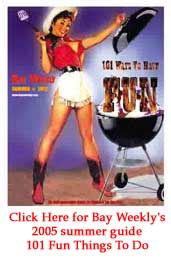Editorial
Preserving a Link in the Bay Food Chain
Cutting a link out of the food chain is like cutting a cross section out of a tree. No matter how small the cut, the tree collapses. Menhaden, the little fish in the news nowadays, is the nearly invisible link connecting the Bay’s food chain.
This summer, that oily little fish is the subject of many meetings along the Atlantic Coast. In Annapolis last week, 250 nervous and sometimes agitated people showed up to urge The Atlantic Marine Fisheries Commission to set limits to preserve the Chesapeake’s food chain from one rapacious predator.
No state has more riding than Maryland on the commission’s deliberations about slowing the vast menhaden harvests in the lower Chesapeake Bay by Texas-based Omega Protein.
The urgency of this decision showed as watermen, sportfishers and environmental advocates from up and down the Maryland Bay spoke with one voice, demanding that the commission use its power in the short term to limit catches.
Unbelievably, there is no limit now on what this Texas company can take from the Bay and its people. That’s why Omega, deploying spotter planes that direct its fleet, has harvested an average of 110,400 metric tons of menhaden annually since 1998.
It would be a modest step at best for the commission to complete its so-called Draft Addendum II by limiting Omega to no more than its recent average while quickly assembling evidence of damage to Chesapeake Bay.
Maryland charterboat captains spoke eloquently about the damage they see every day. Menhaden — food for striped bass and other Bay finfish — “aren’t getting through” to Maryland waters because of Omega’s high-tech, factory fishery.
Fishing folks arrayed at tables of 10 for the meeting swapped tales of skinny, starving rockfish. Of game fish cannibalizing their own kind to survive. Of motoring for hours to find a school of menhaden and the sport fish that follow them.
Have Marylanders fallen asleep? The destruction of menhaden is all the more shortsighted because of the work these tiny, oily creatures do in removing nutrient pollution from the Bay.
Fishing industry spokesmen told of finding it difficult to deal with Omega, which talks increasingly about lawsuits to protect its rights to do as it pleases.
From Alaska to Florida, citizens have found ways to protect threatened species from corporations with lawyers paid to protect their right to despoil public property. And last we looked, we had a few decent lawyers in Maryland, too.
To watch our rockfish industry suffer now after enduring that 1980s’ moratorium is one more reason to fight. We applaud Gov. Robert Ehrlich for his promise to join the fray.
While the commission is considering this cap, it should figure out how to ban the use of spotter planes and purse seines in Virginia waters, unethical methods already outlawed in Maryland.
“Cap the Catch” was the phrase of the evening, emblazoned on caps distributed by an alliance called menhadenmatter.org.
While this decision is pending, those words ought to become Maryland’s state slogan.


